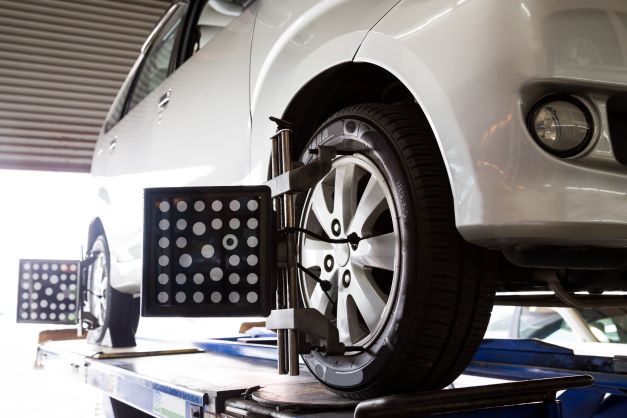When you’re a car owner, you have to pay attention to problems that arise with your car. Fixing problems quickly helps keep your car running longer. If you’re having trouble with the suspension, it’s crucial to get these things fixed. Many suspension problems affect not only how smooth your drive is, but can also negatively impact other systems in the vehicle.
Shock Absorbers
One of the easiest suspension problems to detect is when the shock absorbers start to go. When this happens, you’ll notice that your drive is a lot bumpier than it used to be. When the car starts bouncing around the road, replace the shock absorbers. Shocks contain fluid and help keep the tires planted firmly on the road. When the fluid starts to leak, bouncing is no longer able to be absorbed and dampened. Shock absorbers don’t necessarily affect other systems, but without them your drive becomes extremely uncomfortable.
Wheel Alignment
Part of the car’s suspension system is the wheel alignment. If your wheels aren’t aligned properly you literally may not be able to drive straight. Your steering won’t be centered, and tires won’t wear correctly. Your alignment can get thrown off by a variety of things, including potholes and curbs. Take your car in regularly to get the alignment checked. The most common time to get the alignment taken care of is when you get new tires put on the car. Not only does the wheel alignment make it more difficult to steer, it also affects how quickly you need new tires.
Ball Joints
The ball joints in your suspension system help absorb some of the up and down shock in the car, connect the suspension system to the wheel, and the joints rotate as you move the steering wheel. You can tell when the ball joints need replacement because you’ll hear grinding and squeaking when you’re turning. In some more severe cases ball joints may break and actually cause the suspension system to start dragging while you drive. If this happens, it’s time to stop driving the car and get it to the shop immediately.
Springs
The springs hold the weight of your car up. However, because of the way the springs work, they can easily wear out. Once they start to wear out or break, you’ll notice that the car is lower on one side than the other. If the car starts to sag toward the ground, it’s time to get the springs checked. Remember, not getting your springs fixed can lead to more severe damage to the car in the long run. Other signs that the springs need to be repaired including problems going around corners and a strange noise when you go over bumps in the road.
If you suspect suspension problems in your car, it’s time to get it to the vehicle to a mechanic. Suspension problems make your entire drive worse, and can indicate other problems with the car, as well. Don’t wait too long to get the car checked out.






